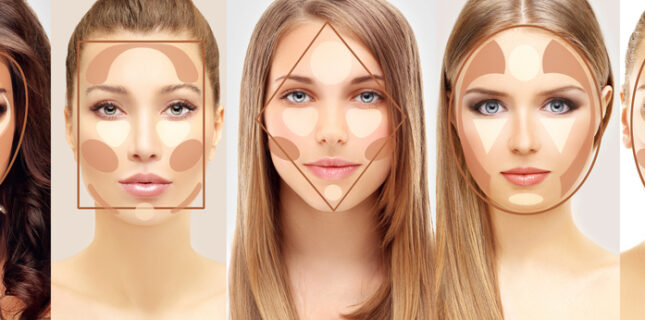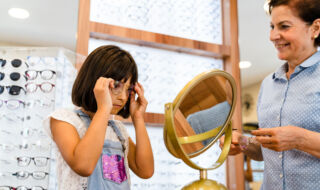
Matching Frames to Faces
There are some decades-old rules about tying eyewear to face shape, as well as to skin tone and hair color. While there are often good reasons to break those rules, especially when you want to make eyewear to make a specific statement, it’s also valuable to revisit some of those time-tested guidelines.
Tip: For blondes, darker frames work well by contrasting with the lighter hair color. Gold-toned frames, not so much.
FACE SHAPES
Here are the most common shapes and ways you can complement those faces with eyewear:
• OVAL. The No. 1 face shape in the U.S., it is also considered the most versatile. To create balance in the middle, find a frame with sufficient depth that is as wide or wider than the widest part of the face.
• DIAMOND. Select eyewear that widens the forehead and jaw but minimizes both cheekbones and temples. Frames that are “heavy” on the top but straight or rounded on the sides work well, as do square frames or those with a straight top combined with a curved bottom.
• ROUND. This face shape is pretty much as wide as it is long and is mostly angle-free. That’s why angular frames and ones that are more wide than deep will work well; square or extremely round shapes won’t.
Oval is most common face shape in the U.S. and is also considered the most versatile.
• SQUARE. Select glasses that make the face appear longer. Those shapes include narrow and gently curved styles and frames that are wider than the broadest part of the face.
• OBLONG. The goal is to shorten and widen the face. Check out round, deep, or low-triangle shapes. Frames with horizontal lines work well, too.
What about matching the color of frames to both skin tones and hair color?
FRAME COLORS
• SKIN UNDERTONES. All complexions have either warm or cool tones. Cool skin has pink or blue undertones, so black, blue, jade, plum, and pink frames are a great match. Warm skin, other the other hand, has more of a peaches-and-cream or yellow undertone. Good frame colors include red, khaki, copper, off-white, and warm blues.
HAIR COLORS
• Darker frames work well by contrasting with BLONDE hair. Gold-toned frames, not so much.
• For BROWN hair, good colors vary by skin tone. For example, black, tortoise, blues, and pinks work well for folks with warmer skin tones. Green, white, and purple are additional options for brown-haired people who have cooler undertones.
• REDHEADS are lucky because they can wear strong colors as well as neutrals and black-and-white combos.
• BLACK. Stay away from pale pastels and opt instead for stronger colors, such as dark tortoise and black.
• GRAY/WHITE. Black and colors like cherry are perfect. Brown, however, is not a good option.
How do you select frame shapes and colors for patients? Tell us about it and share in the conversation on Facebook here.
Sources: Eyecare Business, The Vision Council’s Envision Yourself Program, and “See the World in Style,” a book written by optician Carol Norbeck, who previously owned three high-end Optical Illusions shops in Seattle.
Comments are closed.









